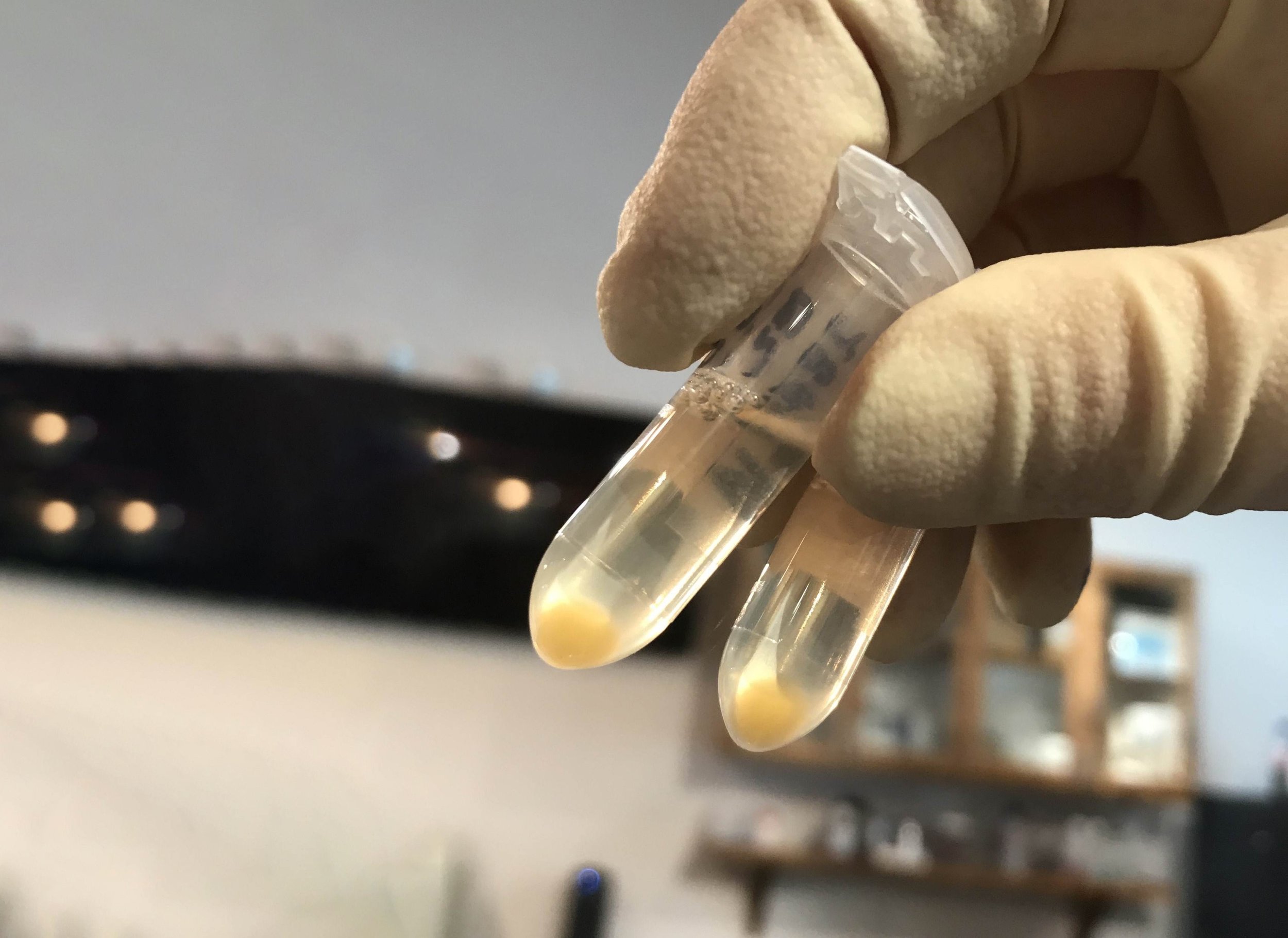A blood test to diagnose ALS.
A blood test to diagnose amyotrophic lateral sclerosis (ALS) could be widely available within two years.
Currently, ALS is diagnosed through a clinical examination by a neurologist but distinguishing it from other neurological diseases requires tracking symptom progression.
This is problematic, as the average survival time in ALS is approximately three years, meaning many patients deteriorate significantly before receiving a definitive diagnosis.
Initial misdiagnosis rates range as high as 68%, delaying treatment and causing patients to be passed between specialists, increasing anxiety, unnecessary interventions, and costs.
A simple blood test for ALS would be a game-changer. It would speed up diagnosis, reduce anxiety, lower costs, and support the development of new drugs. Given the high misdiagnosis rate, a negative result would also be highly valuable.
Extracellular vesicles are nano-sized particles that circulate in the blood, are secreted by all cells, an contain microRNA. Photo by Dr Rachael Dunlop.
Researchers at the Brain Chemistry Labs in Jackson, Wyoming, reported today in Brain Communications that they have identified an ALS-specific biomarker, an “ALS fingerprint,” in the blood. The biomarker of eight microRNAs (miRNAs) can be detected via a simple blood draw.
Using next-generation sequencing and real-time PCR, the team analyzed blood samples from patients with ALS, Primary Lateral Sclerosis (PLS), Parkinson’s disease (PD), and healthy individuals.
The eight microRNA ALS fingerprint accurately detects ALS with as high as 98% accuracy and can separate ALS from PLS and PD.
“Faster diagnoses will allow for earlier treatment, which will improve patient outcomes,” says Sandra Banack, lead author of the study.
To confirm its reliability, the biomarker was tested across four different patient groups, in two labs, with various technicians and collection methods. The ALS fingerprint consistently produced reliable results.
Researchers believe this blood test could assist neurologists in diagnosing ALS and complement current clinical assessments.
Dr. Paul Alan Cox, Executive Director of Brain Chemistry Labs, hopes to secure a diagnostic company partnership and make this test widely available to neurologists within 18 to 24 months.
————
Brain Chemistry Labs is a 501(c)(3) not-for-profit organization in Jackson, Wyoming, that seeks to discover new ways to prevent, diagnose and treat ALS, Alzheimer’s, Parkinson’s and other serious brain diseases.
The Brain Communications paper, “A microRNA diagnostic biomarker for amyotrophic lateral sclerosis” (DOI 10.1093/braincomms/fcae268) can be accessed here.
Wyoming Couple Gifts Robot to Jackson Nonprofit Brain Chemistry Labs
Jackson, Wyoming – August 10, 2023
A generous gift from Dr. Denis R Lyman & Diane K Robards Lyman Foundation in Wyoming will bring rapid diagnosis of ALS much closer to the patients and their families.
Dr. Rachael Dunlop and Stewart Wood operate the new robot in the Brain Chemistry Labs.
This robot has sped up the validation process for the new microRNA ALS diagnostic test invented by the not-for-profit Brain Chemistry Labs.
The test is made from a standard blood draw in which small particles called extracellular vesicles released by the brain into the bloodstream are extracted.
Once concentrated, microRNA is extracted and sequenced.
The Brain Chemistry Labs team, led by Dr. Sandra Banack and Dr. Rachael Dunlop, discovered that a “fingerprint” of eight specific microRNAs distinguishes ALS patients from healthy people.
Using blood plasma samples from a Phase II clinical trial and the Centers for Disease Control National ALS Biorepository, the Brain Chemistry Labs team has reproduced this result four times.
The gift of a liquid-handling robot from The Dr. Denis R Lyman & Diane K Robards Lyman Foundation moves the diagnostic test one step closer to high throughput, making it an attractive prospect for licensing by a pharmaceutical company. Automated pipetting increases the speed of analysis and reduces human error during sample preparation.
Dr. Sandra Banack holds a sample of neurally enriched exosomes extracted from an ALS patient blood sample.
The scientists affectionately refer to the robot as “Nevada” after the first volunteer at the Brain Chemistry Labs. Nevada Robards was an early pioneer in the development of the whitewater rafting industry in Jackson Hole and was Diane Lyman’s mother.
Contact: Marya King, marya@ethnomedicine.org, 224-358-6578
Can We Transform the Diagnosis & Treatment of ALS?
In 1874, Jean-Martin Charcot described a devastating paralytic illness which we now call ALS.
ALS cuts down people in the prime of their lives.
Only two FDA-approved drugs exist for the treatment of ALS, and neither significantly slow disease progression.
We have focused on the early diagnosis and treatment of ALS.
We discovered a molecular fingerprint of ALS, which will allow neurologists to definitively diagnose ALS based on a single blood draw. We extract microRNA from exosomes—microscopic packages of genetic material—in the blood sample. The unique assemblage of microRNA identifies ALS patients.
Currently, many patients have to wait a year or more to receive an ALS diagnosis. This new diagnostic test will allow patients to begin treatment much earlier.
Our advanced clinical trials of the naturally occurring amino acid L-serine are promising.
Hopefully, this combination of a diagnostic and a treatment package will be attractive to a pharmaceutical partner who can conduct the larger clinical trials that will be needed.
Dr. Sandra Banack prepares an ELISA plate to measure exosomes.









